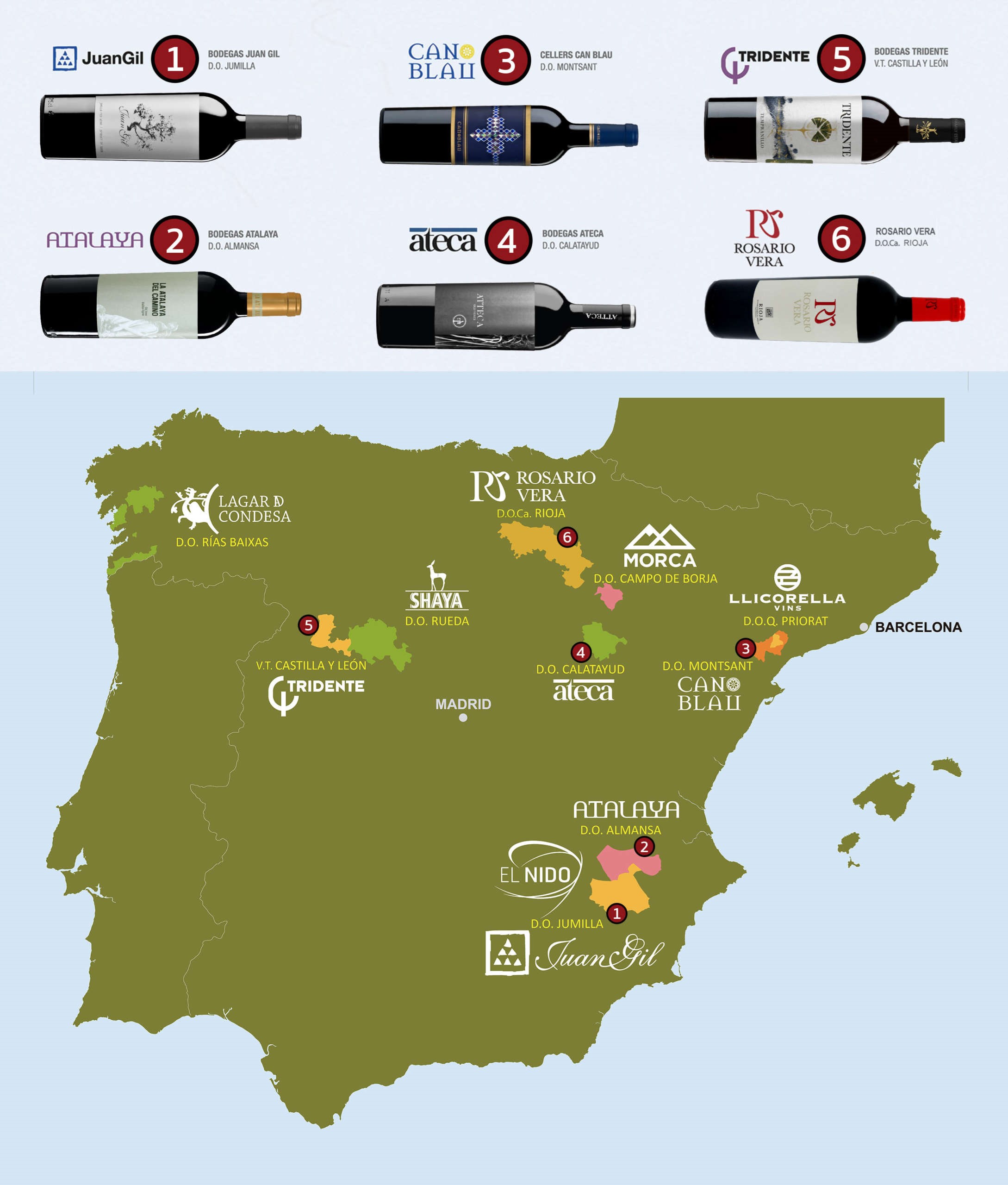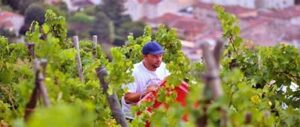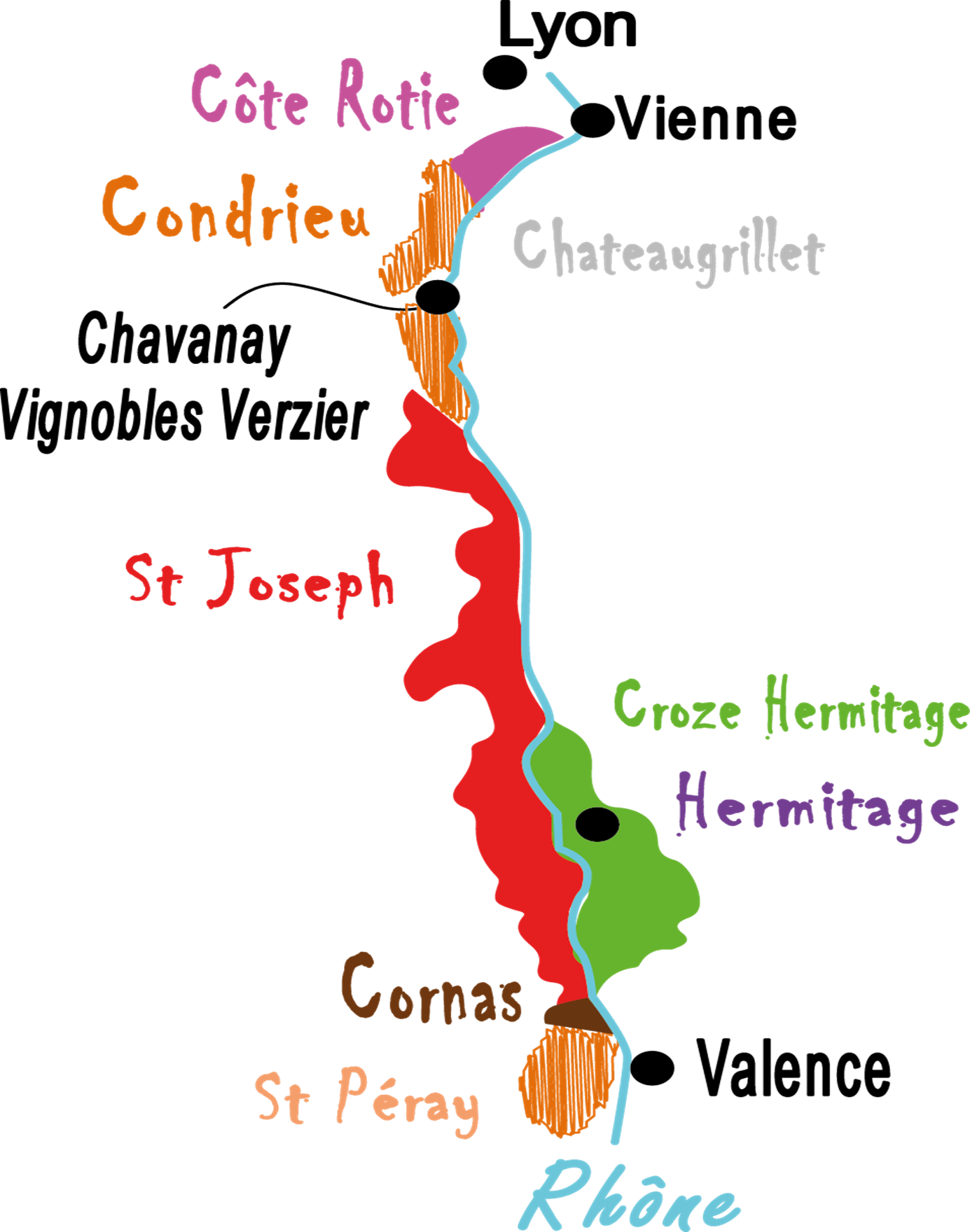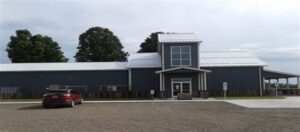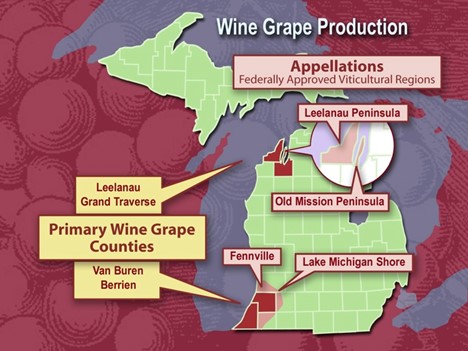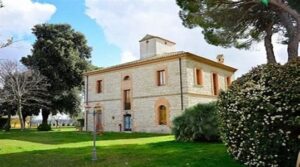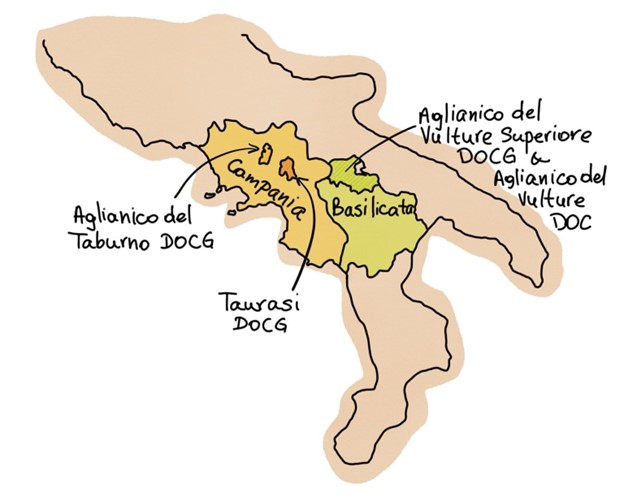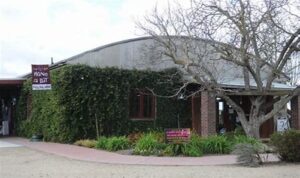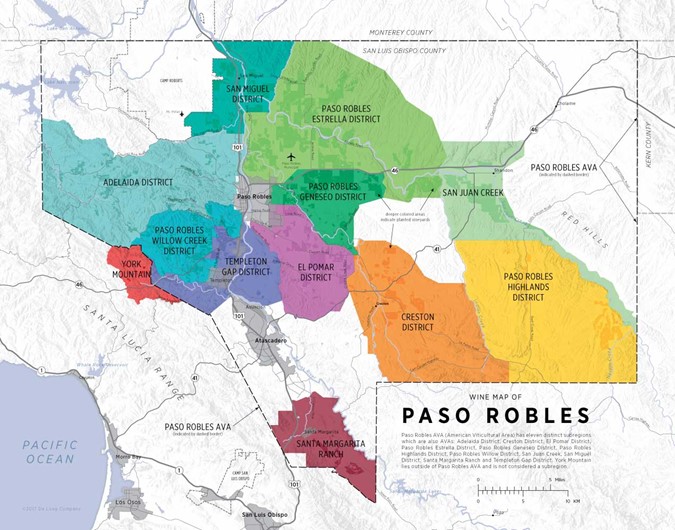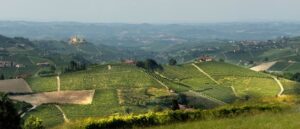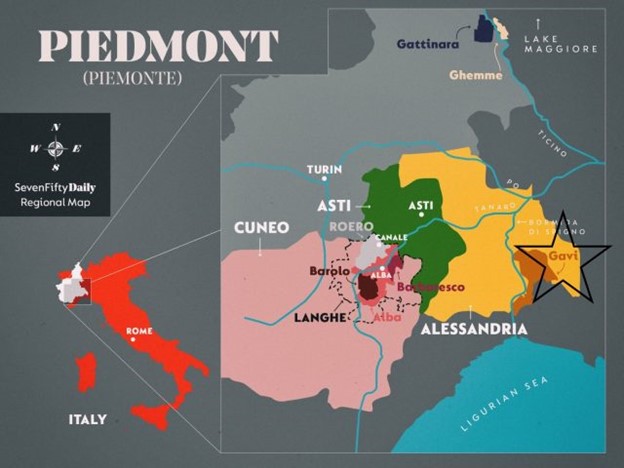Holiday Market Wine
THE GOLD CLUB
MARCH 2023 WINES
-
7CELLARS CHARDONNAY
-
BODEGAS BORSAO CABRIOLA
-
CALDERA FABRIZIA XENIO RUCHE
-
VIGNOBLES VERZIER AUTHENTIC CONDRIEU
-
ALTANZA GRAN RESERVA RIOJA
-
MARCHESI INCISA DELLA ROCCHETTA BARBERA d’ASTI

7CELLARS CHARDONNAY
2019 | $17.99
DESCRIPTION
7Cellars was founded by professional football icon John Elway, and his long-time business partner, Jeff Sperbeck. With the success of Elway’s Steakhouses, John wanted to create a wine that would live up to his ideals and be a proud representation of his family’s name. They partnered with iconic winemaker Robert Mondavi, Jr. to release the company’s first vintage of Reserve wines, with a 2013 Cabernet and a 2014 Chardonnay. After five successful and sold-out vintages of the Reserve, 7Cellars has expanded with another collection. The Farm Collection was released in March of 2020. This collection is offered at a more approachable price point, but with the same superior quality for which the brand is known.
7Cellars Chardonnay 2019
This wine is sourced from premium vineyards in Arroyo Seco located in the heart of Monterey, California. It is 100% Chardonnay that has been aged 40% in French oak barrels for 9 months. The winemaking team of OneHope vinifies this wine led by Mari Coyle.
Arroyo Seco is one of the oldest AVAs in California, its status granted in the early 1980s, and also remains one of its smallest. It’s named after the dramatic, seasonal river of rain and snowmelt that cuts through the upper elevations of the Santa Lucia Mountains, the Arroyo Seco AVA extends east from the resultant mountain gorge, and into the rural and warm Salinas Valley. During the growing season, cool and damp Pacific Ocean air penetrates the gorge and flows into the valley, creating a cool evening respite for vineyards after a hot summer day. This natural water-release has also created a subterranean aquifer, which helps set the foundation of the AVA's boundaries and supplies the vineyards with water.
Arroyo Seco was actually home to the first commercial vineyard in California, called Mission Ranch, which was owned and propagated by the Mirassou family in the 1960s.
Chardonnay is the grape most widely grown here, but as one of Monterey’s warmer regions, Arroyo Seco enjoys the highest praise for its reds, namely Bordeaux blends.
TASTING NOTES
NOSE: Aromas of dried peach skin, lemon, pineapple, vanilla and savory spices.
PALATE: This medium-bodied Chardonnay is a bright, fruit-forward wine with tropical fruit, lime, and pear; complete with balanced acidity. A well-structured wine with flavors of green apple, and a touch of toasted oak on the finish.
PAIRING: Mild, buttery, or creamy dishes, grilled vegetables, grilled chicken, grilled shrimp, salad with goat cheese, or Thai Style Chicken Wings.
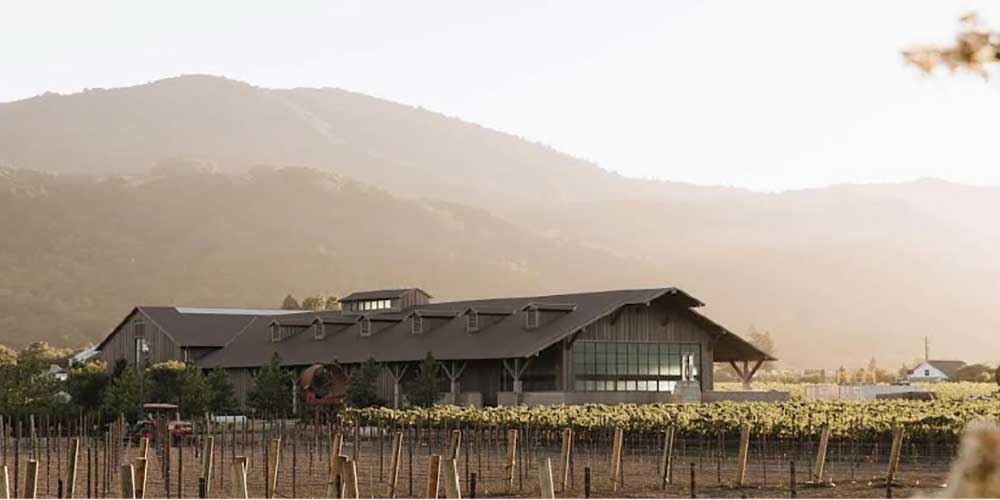
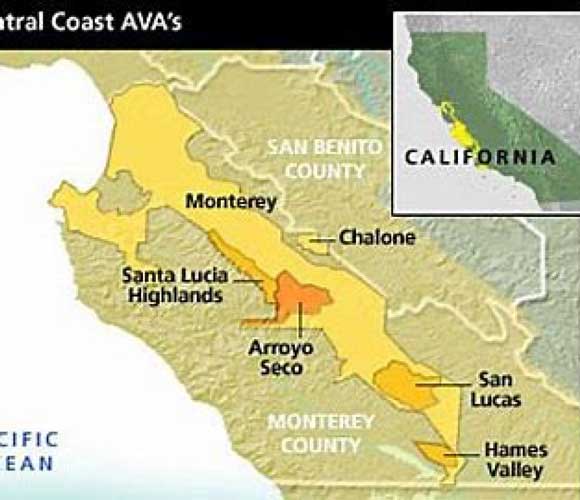

BODEGAS BORSAO CABRIOLA
2017 | $18.99
DESCRIPTION
The first written records about winemaking in the region date back to 1203 and were founded in the Monastery of Veruela. The monks had an essential role in the development of vine growing and winemaking in the region.
Bodegas Borsao origins go back to 1958, the year the Cooperative of Borja was founded. This is where Borsao originated as a brand. Some years later, the co-operatives of Pozuelo and Tabuenca joined Borja, adding their resources and –most importantly- their vineyards. It happened in the year 2001, and the new company was called Bodegas Borsao S.A., established as a limited company. Its 700 members became shareholders and a management team was appointed to shake the foundations of the winery: starting with the grape sourcing scheme and following with a refurbishment of the winemaking facilities. Nowadays there has been more professionalization and now they are 375 winegrowers.
Experience, resources and means combined with the potential of the vineyards of the 3 wine cellars, enabling the development of a new work philosophy that has given Bosrao international recognition and prestige.
“We will continue working on our vineyards, using the indigenous clone of Garnacha of Aragón, studying our microclimates and learning about the potential of the different sites.” -Bodegas Borsao
Bodegas Borsao Cabriola 2017
The wine is a blend of 55% Grenacha, 39% Syrah, and 6% Mazuela. What is Mazuela? Good Question. It is a red grape with fruity flavors of mixed black fruits with notes of pepper, licorice, and some spicy accents, and it possesses high tannins and acid. It is used as a blending grape and is known by many names, for instance, Carignan Noir is one example. Borsao Cabriola comes from old vines aged between 20 and 60 years old that grow under the influence of the Moncayo Massif Mountain chain and are traditionally cultivated. The harvest is carried out manually when the grapes reach optimum ripeness. These three grapes are fermented separately in stainless-steel tanks at controlled temperatures. Afterward, the wine is aged for twelve months in French and American oak barrels.
TASTING NOTES
NOSE: Aromas of vanilla with intense fruity tones.
PALATE: It has a long and pleasant very harmonic aftertaste, structured and round.
PAIRING: Pork, lamb, beef, braised meat dishes, duck, wild game, stews, and grilled meats.
FUN FACTS: "A full-bodied and round-textured red with cherries and blackberries and some walnut and dried-herb undertones. Medium body, lightly chewy tannins and a fruity finish."
-James Suckling 91 Points
Cabriola is a specific jumping maneuver that a horse is trained to perform after years of exacting dressage. The movement requires great technique and precision from the rider and a horse working as a team. Much like the relationship between our winemaker and vineyards, combining masterful techniques.

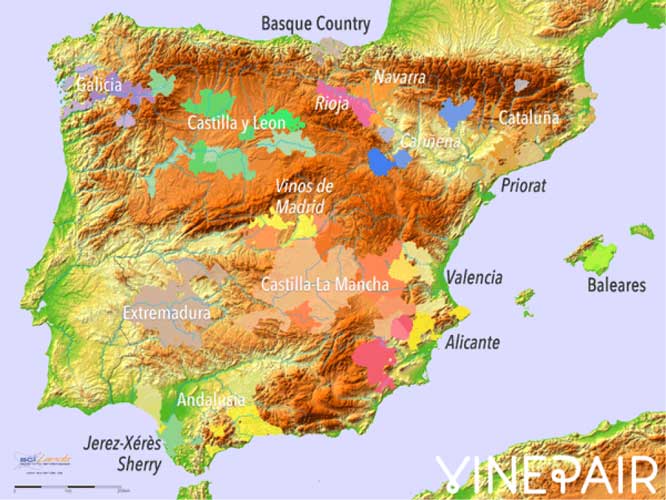

CALDERA FABRIZIA XENIO RUCHé
2018 | $19.99
DESCRIPTION
The Caldera winery is a historical presence, deeply rooted in the territory. The bottle label is a tribute and the result of a genealogical and heraldic research. In fact, the presence of the Caldera family in the territory of Pisa has already been attested to from around the 12th century.
The winery owes thanks to the far-sighted vision of Prospero Caldera. He decided in the early twentieth century to build it in a strategic position, that is, near the Portacomaro railway station – almost as if he wanted to trace the destiny of a winery with an international vocation. A choice, which today seems difficult to understand but, at the time, changed the fortunes of the family. The station, and consequently the railway, was in fact the only method to transport wine abroad.
Today there is Fabrizia who, together with her husband Roberto Rossi and son Fabio, leads the winery towards a modern and technological evolution for an increasingly attentive and demanding public.
The Caldera winery has always been open to the world and has always made far-sighted and avant-garde decisions. In fact, Fabrizia Caldera’s choices continue in the same direction as the first founder Prospero.
From the Monferrato hills, the winery project began in the last century. This is strongly oriented on bio-sustainable themes, respectful and attentive to the ancestral and anachronistic pact between man and earth. According to the family, the generosity of Mother Nature and her gifts is amply rewarded by carrying out ecological, sustainable and green choices.
Caldera Fabrizia Xenio Ruché 2018
This wine is 100% Ruché (ROO-kay) grapes from the Castagnole Monferrato region. The average vine age is 20 years old. It is vinified in a traditional method with controlled maceration, pumping over of the fermenting must and punching down of the cap during fermentation. When it is consumed young it has more fruity and floral notes, with aging it becomes more austere and complex.
TASTING NOTES
NOSE: Aromas of roses and violets mingled with spice notes.
PALATE: Dry, balanced, and velvety with notes of blackberry, raspberry, and ripe plums, and hints of spice.
PAIRING:This wine pairs well with salami, ham, game, blue cheeses, and dark chocolate. Also, it’s a great companion with oriental cuisine and piquant dishes.



VIGNOBLES VERZIER AUTHENTIC CONDRIEU
2016 | $27.99
DESCRIPTION
The farm has been in the Verzier family since 1828. The surface area of our vineyards is about ten hectares and shared between red Saint Joseph, white Saint Joseph, Condrieu, Côte Rôtie and Vin de Pays from the Rhône valley hillsides. It is located on the top of the hillside of the town of Chavanay, just next to the Madonna of Izeras, in the heart of the vineyards of Saint-Joseph and Condrieu, on the right bank of the Rhône River 50 km south of Lyon. Philippe, the youngest of the seven children, fell in love with these gnarled vines and took over the estate in 1988, at the age of only 19.
At the time the property was in polyculture with cereals, fruits, vines, cows and goats. Philippe, however, wanted to devote himself exclusively to the vines and began with the 2.5 hectares in Saint-Joseph that were his father's, Jean. He replanted some plots, including his first Condrieu under the Madonna. He ceases the harvest contributions to the cooperative cellar and vinifies his first vintage 1988, in the cellar he built.
The tiny estate has taken off and now represents 14.7 hectares. Maxime, Isabelle and Philippe's son, joined them in 2016 after some experiences in Alsace, Burgundy, Canada and South Africa.
Vignobles Verzier Authentic Condrieu 2016
Condrieu is composed of 100% viognier grapes. Viognier (“Vee-own-yay”) is a full-bodied white wine that originated in southern France. The vines are planted on terraces situated on a southeast-facing hillside overlooking the city of Chavanay. The vines are organically farmed with de-hydrated compost (bovine-manure based), treatment with herbal teas, bio-dynamic preparations, sulfur, and Bordeaux mixtures to maintain the balance between vine and soil. The harvest is done by hand when the grapes are ripe and then hand sorted on a vibrating sorting table. The grapes are pressed and fermented in stainless-steel tanks. At the end of the alcoholic fermentation 80 % of the volume is put in 500-litre oak barrels, systematic malolactic fermentation followed by a maturing period of 9 months (including 4 months on fine lees).
TASTING NOTES
NOSE: A highly aromatic grape, viognier is distinctly scented with apricot, which can vary from the flesh, to the kernel, to apricot blossom, and those characters can be extremely exotic when quite ripe.
PALATE: Viognier ranges in taste from lighter flavors of tangerine, mango and honeysuckle to creamier aromas of vanilla with spices of nutmeg and clove.
PAIRING: The trick to pairing foods with Viognier wine is to fully respect its delicate floral notes and medium acidity. Thus, as a general rule, focus on embellishing and expanding the wine’s core flavors while making sure that the foods you pair with it aren’t too acidic or bold. Examples: Halibut, Sea Bass, Lobster, Crab, Shrimp, Poached Salmon, Savory Orange Chicken, Fondue, Farmer’s Cheese, Comté, Baked Brie with Apricots, Gruyere, Young Sheep’s Milk Cheeses and vegetables.
FUN FACTS: Fresh lime and mint lend an invigorating tone to tangerine and apricot in this unusually fresh expression of Condrieu. Stone-fruit flavors are ripe and concentrated but balanced briskly by sunny lemon acidity. The finish lingers on a slick of honeycomb.
-Anna Lee C. Iijima
Wine Enthusiast 91 Points
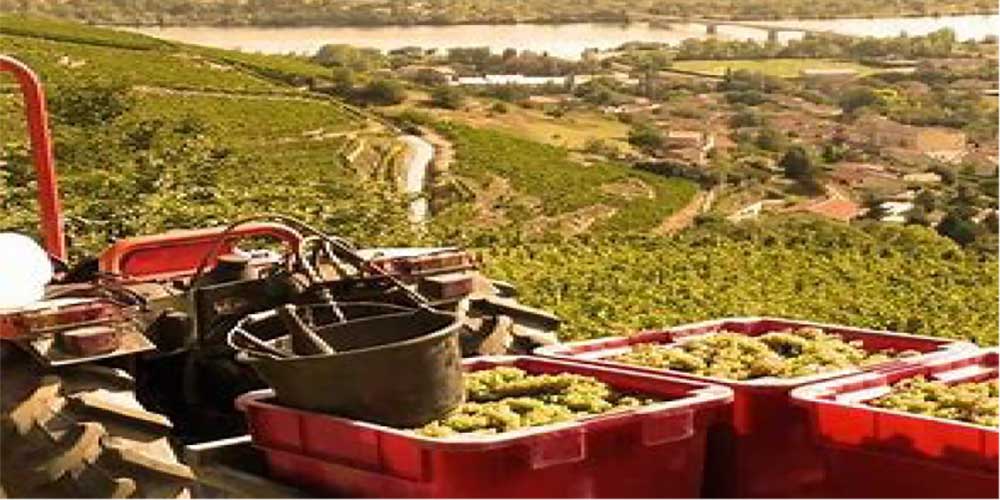


ALTANZA GRAN RESERVA RIOJA
2011 | $30.99
DESCRIPTION
Altanza winery is in the most prestigious region of Rioja, Rioja Alta. The winery cultivates just two grape varieties sauvignon blanc and tempranillo and practices organic farming methods.
Altanza was founded by a group of friends who shared the dream of making classic timeless Riojas, with a modern touch and a lot of authenticity. They built a state of the art winery based on 3 pillars: their own Estate vineyard, Tempranillo grapes and French oak.
Altanza Gran Reserva Rioja 2011
This robust red is 100% tempranillo grape and 2011 is this current vintage release. How is this the current vintage? In Spain, and all wine making countries, there are rules that must be followed. There are controlling organizations that dictate what grapes can be grown, what grapes can be blended, the percentage of grapes used, how long or short a wine needs to be aged and other directives. These organizations are in place to guaranty authenticity, standards, and quality in wine making. These are the levels of aging in Spain and what is required:
Crianza- Think about Crianza as being the first tier of a “Reserve” wine. Spanish law requires that for a red wine to be labeled as a Crianza, it must be aged for two years, with a minimum of one year in an oak barrel and for another year in the bottle before it’s sold.
Reserva- Aged for at least three years in the cask and bottle, at least one of which must have been in the cask
Gran Reserva- To be labeled as a Gran Reserva, the law requires that it be aged for a minimum of 5 years, with two of those years being within an oak cask or barrel.
TASTING NOTES
NOSE: Rioja wines will have different aromas depending on their classification. In this case, fruit notes dissipate and secondary notes like earth, leather, tobacco, cocoa, licorice, coffee, and herb are more prominent.
PALATE:Full-bodied and well balanced with flavors of vanilla, berry jam, chocolate, and savory herb notes. Balanced and elegant with structured velvety tannins and a long finish. Drink now through 2028.
PAIRING: Ideal with red meats, roasts, game, stews, and aged cheeses.
FUN FACTS: Wine Enthusiast Magazine 90 Points
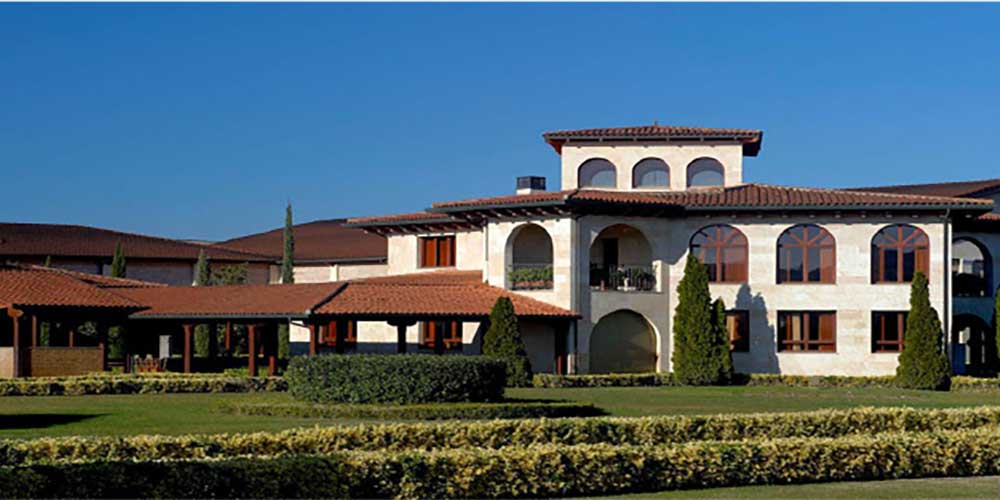
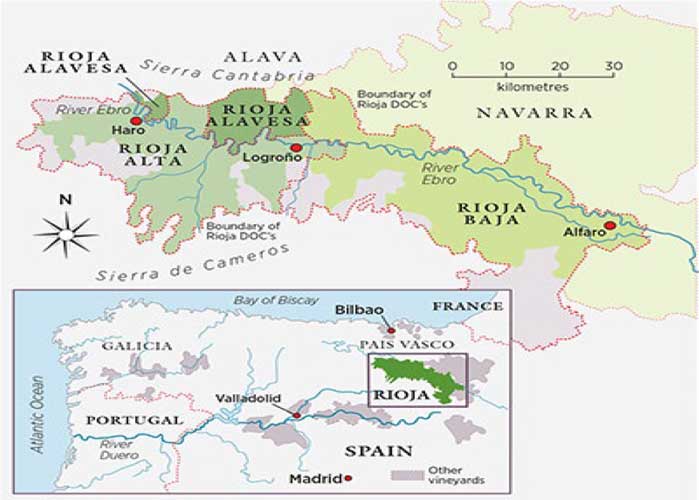

MARCHESI INCISA DELLA ROCCHETTA BARBERA d’ASTI
2017 | $29.99
DESCRIPTION
The Marchesi Incisa della Rocchetta is one of the historic Piedmontese families who have lived in Monferrato for more than a thousand years and since 1400 in the village of Rocchetta Tanaro. Centuries of dedication and passion in the world of wine with the Marchese Leopoldo who introduces Pinot Noir to the hills, the Marchese Mario who moves to Bolgheri and creates the legendary Sassicaia, the Marchesa Barbara who renovates the marvelous winery in the center of the town. Today the new generation, with Filiberto and Francesca, carries on the family legacy and the prestige of the company.
Sant’Emiliano is a cru of Rocchetta Tanaro, a hill and a vineyard well known for its ideal south-facing exposition. It is 2.5 hectares in size, the vineyard site’s soil is a mix of sand and clay, originally a prehistoric seabed rich in minerals. The vines are an average age of 50 years old. Great care is taken during the harvest to select only the best and perfectly matured fruits.
Marchesi Incisa della Rocchetta Barbera d’Asti 2017
Unlike many of the other red grapes in the Piedmont region in Northern Italy. The grape accounts for around 55% of the wine produced in this region. A tough, non-fussy grape, Barbera has been known to be flexible in its acclimation to different regions. It's typically a deep ruby color with low tannin and high acidity. Unlike many of the other red grapes in the Piedmont, Barbera has a relatively long hang time on the vine and that imparts a lot of rich, dense flavors to the wine.
Sant ’Emiliano is their interpretation of Barbera in which the use of barriques contributes to adding complexity and structure to the wine that most represents the territory of the Monferrato. Sant ‘Emiliano is a wine of great elegance and balance, produced with an extraordinary attention to quality, both in the vineyard and in the cellar.
TASTING NOTES
NOSE: Scents of dark fruit, flowers, and spice.
PALATE: This wine is complex. It displays notes of violet, plum and dark cherry when young. With ageing in the bottle, it develops notes of tobacco, chocolate, leather, and licorice. This wine is well-balanced with an exceptionally long and elegant finish.
PAIRING: Barbera wine is a great choice for pairing with food, thanks to its versatile flavor profile and medium body. The wine pairs well with a variety of dishes, including pasta dishes with red sauce, pizza, grilled meats, chicken, and fish.
FUN FACTS: Aromas of blue flowers, underbrush, ripe plum and exotic spice shape the nose. Despite its bold structure and muscle on the palate, it shows surprising finesse in flavors of fleshy blackberry, brandied cherry, star anise and tobacco framed in velvety tannins. Thanks to the succulent fruit, you barely notice the warmth of alcohol on the close.
Wine Enthusiast 90 Points
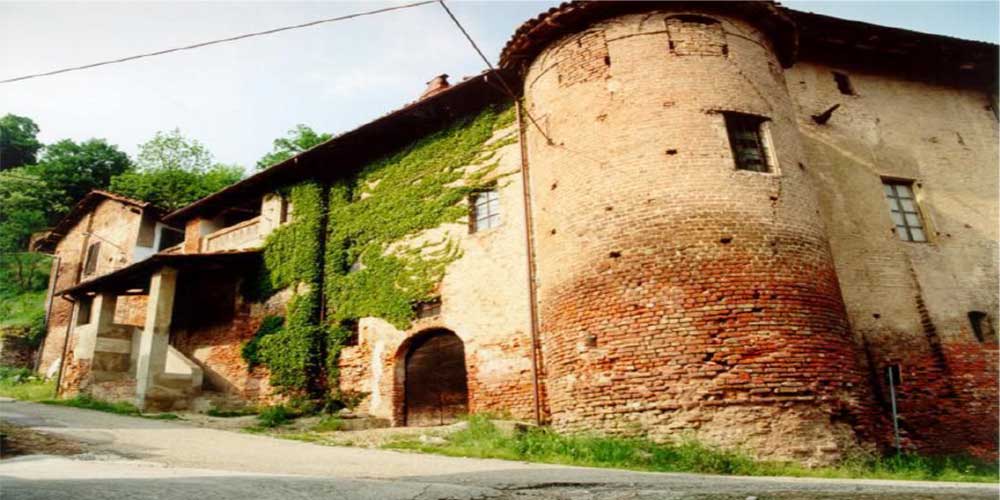

May 2023 WINES
-
Passionate Wines Montesco Piefranc Cabernet Franc
-
Gamble Family Vineyards ‘The Mill Keeper’ Chardonnay
-
Bodegas Juan Gil Bluegray Red Blend Priorat
-
Anne Amie Vineyards Rosé
-
Jean-Paul Brun Domaine des Terres Dorées Fleurie
-
M. Bonnamy Crémant de Loire Brut Sparkling
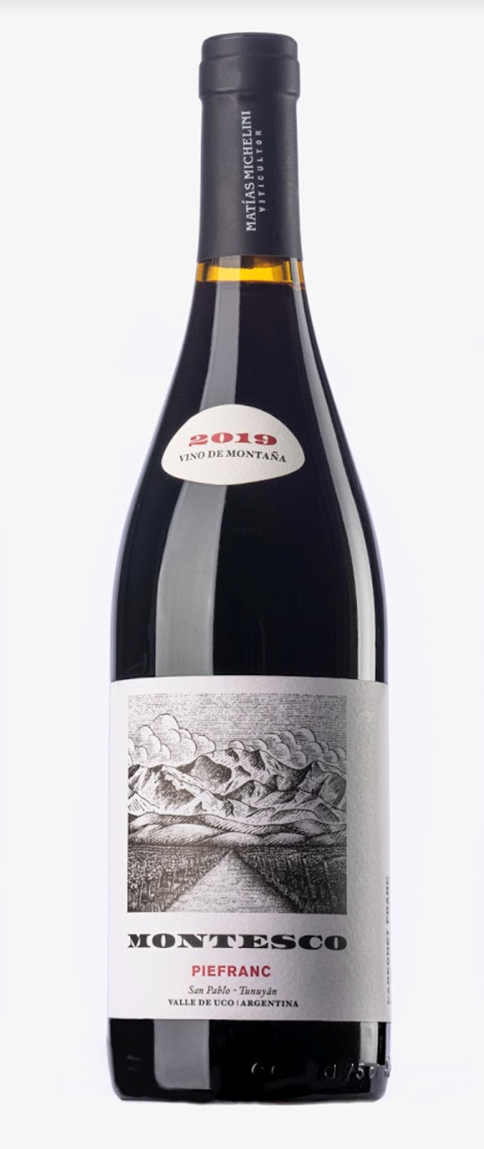
Passionate Wines Montesco Piefranc Cabernet Franc
2020 | $21.99
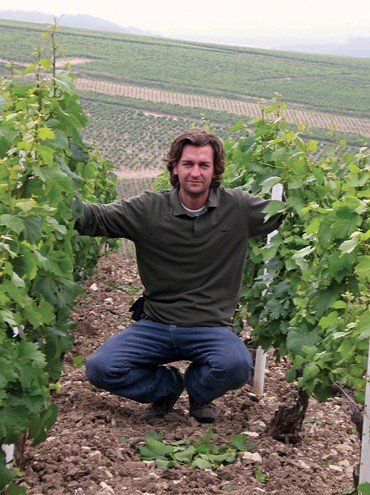
DESCRIPTION
Brazos Wine Imports is owned and operated by Brian Ravitsky and Jon Chaplin. They landed their first container of wine in the United States in 2009. Throughout their careers they have worked in almost every facet of the wine business ranging from Food &Beverage, Retail, Production, Distribution and Supply. They have completed multiple wine-study certifications and are painstakingly passionate about food and wine. They are humbled to represent a focused portfolio from 30 different growers consisting of 13 different families located in some of the best sub-regions of Argentina and Chile. They focus on artisan, single vineyard, small production, estate grown, environmentally friendly wines. The wines they represent share old world, terroir-centric styles which they believe are unique and rare qualities to find in South America.
Passionate Wines is the brainchild of Matias Michelini. He is the winemaker, agronomist, and Grand Poobah of his winery. He is one of the growers for Brazos Wine Imports. Matias strives to make experimental wines that express terroir. These wines are low production and drawn from multiple inspirations, regions, and styles. The Via Revolucionaria wines are single vineyard, unconventional wines, fermented with native yeast. He produces a skin macerated Torrontes “Brutal”, an unfiltered Semillon “Hulk”, and a carbonic macerated and fermented Bonarda “Pura”. The Montesco wines are small production wines that focus on place and varietals. Matias continues to experiment with other cuvees with the mantra of producing either atypical varietals or classic varietals in non-traditional methods.
Passionate Wines Montesco Piefranc Cabernet Franc 2020
Montesco is the label from Michelini for the wines he makes from grapes grown high up in vineyards in Tunuyan and Tupungato. These are some of the highest altitude vineyards he sources from, some very old, and subject to extremely cold weather. The wines are made at his winery, Passionate Wines, in Tupungato, Argentina following his hands-off approach, from native yeasts and with minimal intervention and minimal sulfur levels. The resulting wines are admirable, unique, incredibly elegant, and always high-toned.
This wine is 100% Cabernet Franc grape from a single vineyard planted in alluvial and calcareous soils. It goes through maceration and fermentation in twenty days with native yeast and then spends eight months in a concrete vat. There was only 650 cases produced of this vintage.
TASTING NOTES
NOSE: Aromas include tobacco, raspberry, bell pepper, cassis, and violets.
PALATE: Bold, ripe blackberry fruit, with hints of meatiness and a sprinkling of that signature sandalwood and pepper - this is cabernet franc with the volume turned all the way up.
PAIRING: Beef, lamb, pork, game, poultry, vegetarian, and goat cheese.
WINERY WEBSITE: Passionate Wines
Valle de Tupungato I.G., Valle de Uco G.I., Mendoza, Argentina


Gamble Family Vineyards ‘The Mill Keeper’ Chardonnay NV
$19.99
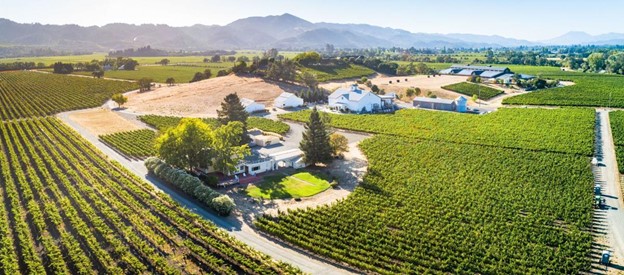
DESCRIPTION
Founded by third-generation farmer Tom Gamble, Gamble Family Vineyards farms approximately 175 acres of prime estate vineyards from several of Napa Valley’s most respected AVAs (American Viticulture Areas). The Gamble family has been farming the Napa Valley since 1916, and every wine they produce is cultivated with their dedication to the land in mind.
In 1916, Launcelot Gamble first began cattle ranching and farming a variety of crops in Napa County. Over the years, Launcelot passed his passion and trade onto his sons, Launce and George (Tom’s father).
In 1955, Launcelot acquired a piece of land in Oakville, a very small portion of which would later become the Family Home Vineyard and the foundation for the family’s entrance into the wine business. In the early 1970s, the family entered a long-term lease with Beringer Vineyards, which planted the land surrounding Family Home to grapes. Having already turned his focus to grape growing with the purchase of several vineyard sites in the 1980s and 1990s, Tom took over the task of farming Family Home, which was originally planted by his mother and stepfather in 1997. Following his family’s method of meticulously caring for the land, Tom’s own farming history earned him a reputation for quality and resulted in increased demand for his grapes from other vintners.
In 1968 Tom’s mother, Mary Ann McGuire, was active in establishing the Napa Valley Agricultural Preserve, an ordinance that protects vineyards from commercial development and ensures that the land is used strictly for agricultural purposes. Tom credits his mother’s efforts as one of the main reasons that he can make a living as a farmer and grape grower today. Had that ordinance not passed, his land and all of Napa would not have been preserved for farming.
In 1981, at the age of 20, Tom Gamble purchased his first vineyard with several partners, making him the first Gamble to begin growing grapes commercially. “Given this legacy, one does not continue farming for dispassionate reasons alone—there are easier ways to make a living. And thus, taking the next step and putting my name on a bottle of wine does not come lightly,” says Gamble.
In 2003 a young, promising winemaker from England named Jim Close met Tom Gamble. Jim had travelled stateside to pursue his dreams of wine making after graduating from Brighton’s Plumpton College of Viticulture and Enology in 1998. He’d been quietly perfecting his craft around the Napa Valley when Tom met him and the two became fast friends. He’s made every bottle of Gamble Family Vineyards wine since 2005.
After two decades of growing and selling his own grapes, Tom was ready. Between2008-2012, he founded Gamble Family Vineyards with the goal of celebrating the distinct Napa Valley terroir he had come to know and love, and the final piece of the puzzle came in 2008, when Tom acquired the land in Oakville where he would eventually begin building his family winery in 2012. Owned by the Lincoln family for more than a century, this historic piece of land embodies the ambience of the 19th Century. The family’s ancestors built the farmhouse, water tower, and barns on the property, which were preserved and protected because of the passion and dedication of the younger generations. As lifelong friends of the family, Tom and his wife Colette were entrusted with the preservation of this historic legacy.
The construction of the winery was designed to ensure maximum efficiency of small lot winemaking while also complementing and blending in with the traditional and historic 19th Century homestead and barns. With the goal of keeping Gamble Family Vineyards a family affair at its core, Tom turned to his brother-in-law, Morgan Conolly, who served as lead architect. The first harvest at the new winemaking facility took place in 2013 and the first guests were welcomed the following year.
Today, a farmer at heart and in practice, Tom Gamble continues to follow a holistic approach. When it comes to farming his land, Tom chooses to focus on the sustainable route, one that he believes provides a return that reinvests in the land. His winery and vineyards are certified Napa Green and certified by Fish Friendly Farming.
Gamble Family Vineyards ‘The Mill Keeper’ Chardonnay NV
A practice that’s been around as long as winemaking itself, they were inspired by vintage-blending processes in old world wine regions to create their own unique method. The Mill Keeper’s dedication to sustainability drives their passion, and multi-vintage winemaking allows them to give consistency and high quality in every sip.
Climate change has been pushing environmental conditions to extremes and creating sub-optimal growing conditions, a phenomenon that is shaping the future of the wine industry. Gamble Family Vineyards are inspired by the vintage-blending methods of some of the most famous wine regions in the old world including sparkling wine production in Champagne and Port production in Portugal. It took them years of experimenting, and they now have their own method down to a science, one in which they consistently use multiple vintages to protect against weather variations and make wine that’s strong and steadfast.
TASTING NOTES
NOSE: Bold notes of coconut and almond.
PALATE: Creamy, classic chardonnay with notes of vanilla moderated by driven acidity. It is balanced and the wine eventually leans in on its nuttier qualities as it reaches a lasting, pleasant finish.
PAIRING: Dishes like eggs benedict for example or even a steak béarnaise. Fine rich fish such as turbot, grilled veal chops with mushrooms, Late summer vegetables such as red peppers, corn, butternut squash and pumpkin (pumpkin ravioli and a rich Chardonnay is very good). Cheddar cheese if you're looking for a chardonnay cheese pairing. Also, chicken, pork, or pasta in a creamy sauce.
WINERY WEBSITE: The Mill Keeper
Napa Valley A.V.A., California
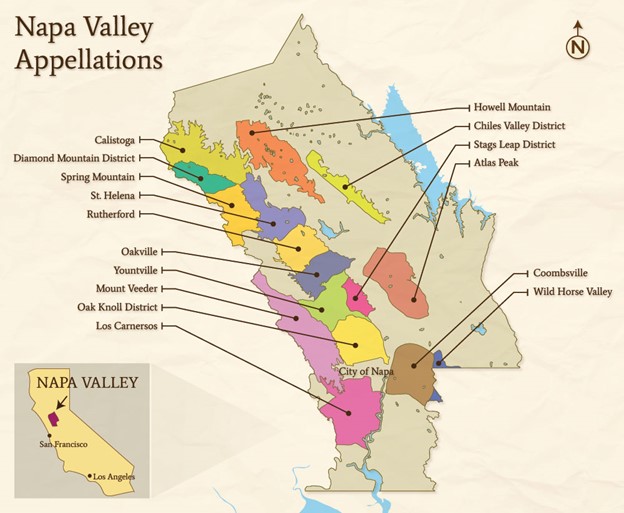

Bodegas Juan Gil Bluegray Red Blend Priorat
2021 | $21.99
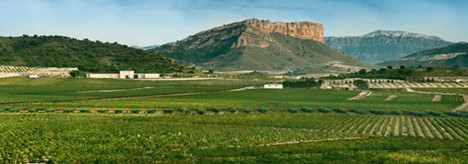
DESCRIPTION
Bodegas Juan Gil has become a Spanish wine powerhouse under the guidance of the family's fourth generation. Founded in 1916 by Juan Gil Jiménez, this is the Gil Family's first winery, created with the goal of highlighting the quality of the native Monastrell grape. Over 104 years, the winery has been consolidated and improved, applying technological advancements to the traditional knowledge passed down through the years.
The appellation of Jumilla, located about sixty miles inland from the southern Mediterranean coast in Murcia, is known for Monastrell (aka Mourvèdre), with over 80% of vineyards planted with it. Most of their vineyards average in age between 40 and 100 years with very low yields. The continental climate is extreme here: summers are dry and hot with intense sun and winters are long and cold. The vineyards are between 2,000 and 2,800 feet above sea level, planted on sandy and rocky limestone soils that are very poor in nutrients, but have a great capacity to hold what little rain does fall. Monastrell is a thick-skin grape that thrives in the harsh conditions of this climate and terrain, leading to wines with great structure and intense color and aromas.
The unique combination of altitude, soil and climate makes Organic farming quite typical in Jumilla. All the Gil Family's estate Monastrell vineyards are dry-farmed without the use of pesticides or herbicides, the winery is entirely solar powered and “Zero-Waste” (by product is composted, water recycled). Organic Farming Certification of the vineyards starting with 2018 vintage of Silver Label.
Their winemaking roots go back over a century. Gil Family Estates comprises eight wineries spread throughout seven D.O.'s in Spain and are famous around the world for bold flavors, lavish texture, and alluring spice.
Bodegas Juan Gil Bluegray Red Blend Priorat 2021
Born on the high-lying terraces of blue slate and quartz soils known as llicorella [yik-o-ral-ya], among pine and olive trees. A very inhospitable location, everything here must be done by hand and the vines have very low yields due to age. It is composed of 40% Garnacha, 30% Cariñena, 20% Syrah and 10% Merlot. The grapes are hand-picked and fermented separately in small barrels for 10 days at low temperatures and then aged separately in French oak barrels for 6 months and finally blended in the desired proportion.
TASTING NOTES
NOSE: Aromas of blackberries and cherries with delicate notes of nutmeg and star anise.
PALATE: The wine is very elegant, has well-integrated tannins, dried Mediterranean herbs, such as thyme, and a lingering finish.
PAIRING: This is a delicious wine with grilled and roasted red meat, game, cured meats, aged cheeses, rice and pasta with flavored sauces, and savory winter dishes.
FUN FACT: “Dark purple. Smoke-accented aromas of cherry, cassis, licorice, and violet are lifted by a peppery quality. Juicy, sappy, and well-concentrated, showing very good density to black currant, bitter cherry, and dark chocolate flavors. Finishes long and spicy, with firm minerality and youthful tannic grip.” Drink: 2023 – 2029.
-Vinous Magazine 92 Points
D.O.Q. Priorat, Spain
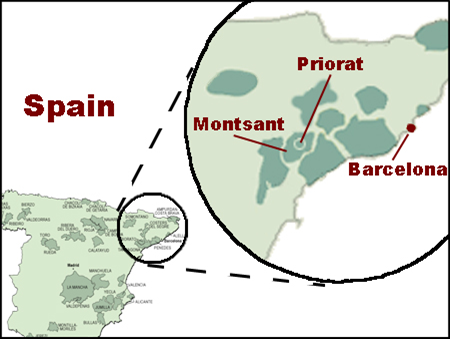

Anne Amie Vineyards Rosé
2022 | $19.99

DESCRIPTION
Pinot reigns supreme at Anne Amie Vineyards with Pinot Noir, Pinot Gris, and Pinot Blanc forming the heart of their production. Complementing the pinot family is Old-Vine Estate Müller-Thurgau, planted in 1979. As with all great wines, theirs starts in the vineyards. They are fortunate to have some of Oregon’s best sites, all of which are Salmon Safe and LIVE certified. Their estate vineyards receive only the minimal required treatments and yields are dramatically reduced to give fruit with great depth and complexity. Their vineyards are in the rolling hills of the Yamhill-Carlton District and on the steep hillsides of the Chehalem Mountains, both nestled in Oregon’s verdant Willamette Valley.
When Dr. Robert Pamplin, one of Oregon’s most forward-thinking philanthropists and businessmen, purchased the historic Chateau Benoit Winery in 1999 and christened it Anne Amie, his vision was to create wines of the highest quality to reflect his passion for excellence. To this end Dr. Pamplin has charged winemaker Gabriela Sepulveda Vignes and winegrower Peter Ebbers with the task of crafting extraordinary Pinot Noir. Gabriela, Peter, and the rest of the crew are passionate about producing wines of the finest quality and have dedicated their lives to this quest.
Anne Amie Vineyards Rosé 2022
The Rosé of Pinot Noir is dry and layered with complex Pinot Noir characters. The winery produces a limited amount of this wine each year. Its label was designed by local Portland illustrator, Kate Blairstone. Kate took inspiration from the two estate vineyard sites to create a label capturing the vibrancy of life in each vineyard. The brightly colored mix includes radish flowers from the cover crops, Western Bluebirds, and wild poppies, as well as strawberries and rose petals which can be tasted in the flavor profile of this rosé.
TASTING NOTES
NOSE: Orange blossom, cherry pie, floral, strawberry, honey, and lime zest.
PALATE: Strawberry, plum, pomelo, kumquat marmalade, orange zest, and grapefruit. Dry, mineral, focused and long.
PAIRING: Shrimp and grits, salmon ceviche, grilled oysters, moules frites, arugula and goat cheese salad, paella, charred broccoli & ricotta, fried chicken, and lobster rolls.
WINERY WEBSITE: Anne Amie Vineyards
Willamette Valley A.V.A., Oregon
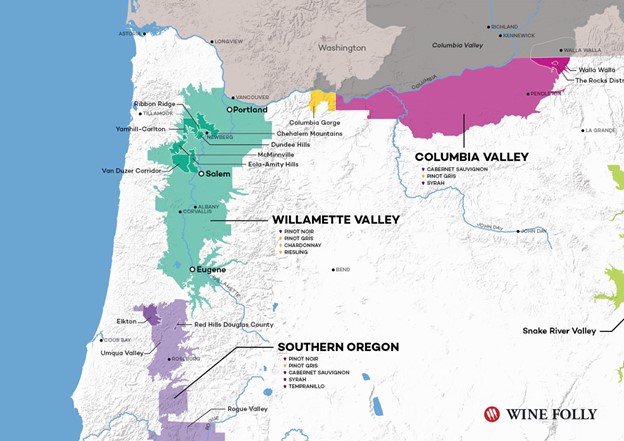

Jean-Paul Brun Domaine des Terres Dorées Fleurie
2020 | $25.99

DESCRIPTION
Jean-Paul Brun started Terres Dorées in 1979 with a mere four hectares of vines. Brun is in Charnay, a village in Southern Beaujolais just north of Lyon, in a beautiful area known as the "Terres Dorées" or Region of Golden Stones in France. He is the owner and winemaker at this 60+ hectare family estate and has attracted the attention of the French and American press for the wonderfully fruity and delicate wines he produces.
Brun wants to make "old-style" Beaujolais and his vinification differs from the prevailing practices in the region. He believes that the charm of Gamay's fruit is best expressed by the grapes' indigenous yeasts, rather than by adding industrial yeast. Filtration is also minimal so that the wine keeps its original fruit and aromas.
Brun’s wines are not ‘blockbusters’ in the sense of ‘big.’ The emphasis is not on weight, but on fruit: Beaujolais as it once was and as it should be.
“Proprietor Brun is a believer in using only the vineyard’s wild yeast, rather than the synthetic yeasts used by most other producers. His beautiful wines are favorites among purists.”- International Wine Critic Robert Parker
In the mid 2000's, Jean-Paul set out to conquer Beaujolais' crus (Premium wine growing areas.). He currently owns land and produces from most of it, including the most recent addition of single vineyard cuvées. All told, he now produces well over 20 different wines from over 60 hectares of vines and shows no sign of slowing down.
Jean Paul Brun Terres Dorées Fleurie 2020
This wine is 100% Gamay grapes. Jean-Paul farms six hectares in Fleurie, all of it in the celebrated lieu-dit of Grille Midi, a south-facing amphitheater of vines on poor, sandy, decomposed-granite soils over hard granite rock. This site yields wines of great concentration, power, and longevity. There are two Terres Dorées bottlings from this vineyard: a straight Fleurie and a "Grille Midi". The key differences are vine age and the aging of the wines. The Fleurie is from the younger vines, which are around 40 years old, while the Grille Midi vines are 65 years and up. The wines are vinified the same way, as are all Jean-Paul's wines: the hand-harvested bunches are destemmed and fermented with native yeasts and without sulfur in concrete tanks.
TASTING NOTES
NOSE: Expect to smell fresh cut violets, iris and peony flowers wrapped in cherry, raspberry, and plum with subtle background notes of potting soil.
PALATE: On the palate, the wines are light with high acidity and tart flavors of red fruits along with a subtle bitter note on the finish.
PAIRING: The amazing thing about Gamay is that because of the high natural acidity paired with low tannin, the wine pairs shockingly well with a very wide array of foods. Basically, it’s hard to go wrong with Gamay and food.
FUN FACTS: The raspberry fruit leaps out of this joyful Fleurie, which is elegant, juicy, crisp, and dry. A very bright wet-stone finish that pulls you back for more. Very good aging potential. Drink or hold.-James Suckling 93 Points
Gamay (“Gam-may” aka Gamay Noir) is a light-bodied red wine that’s similar in taste to Pinot Noir. In fact, this variety is a cousin of Pinot Noir, and it grows primarily next to Burgundy, France (Pinot motherland) in a region called Beaujolais.
One cannot talk about Gamay without mentioning Beaujolais, France which produces 75% of the world’s Gamay wine.
WINERY WEBSITE:
Terres Dorées | Bowler Wine
Beaujolais Fleurie A.O.C., France
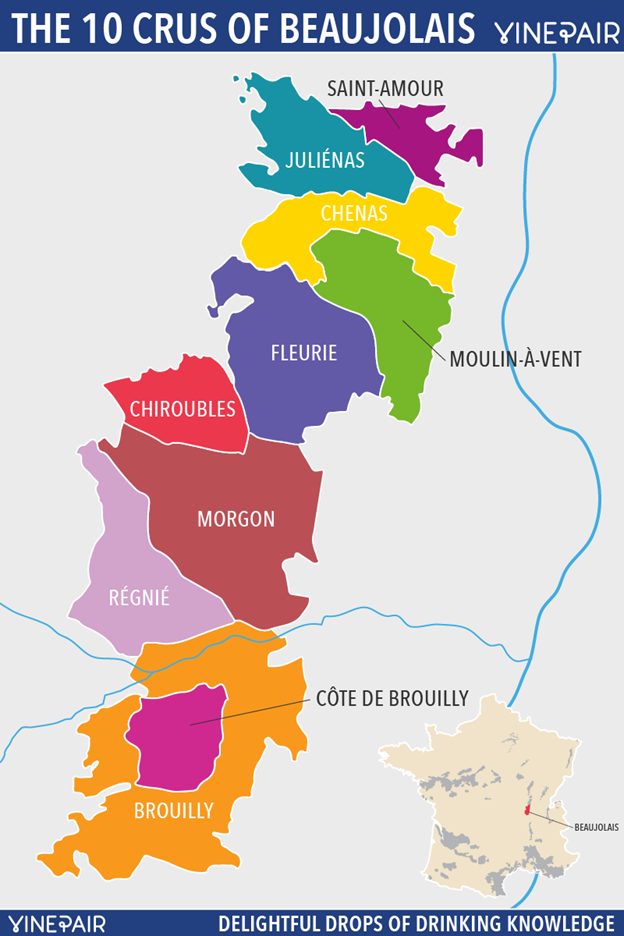

M. Bonnamy Crémant de Loire Brut Sparkling
NV | $18.99
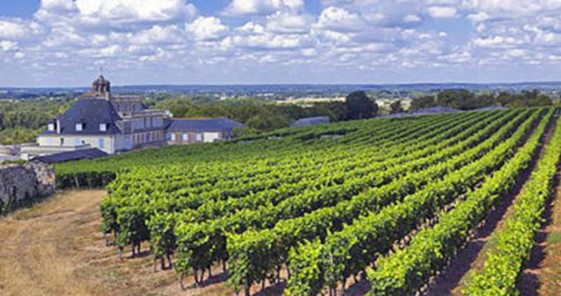
DESCRIPTION
Maurice Bonnamy’s Crémants are produced by a group of winegrowers who decided in 2002 to pool their resources to offer a complete range of authentic, well-balanced wines from Muscadet to Vouvray along the Loire River. The winegrowers are driven by the strong but simple values of the modern cooperative – solidarity, respect, and creativity – values enhanced by a real team spirit, which enriches each stage of the wine production process. This group of 8 cooperative cellars, representing all the diversity of the terroirs and appellations of the Loire Valley are called Sacred Thirst. Wines from the Loire Valley, in general, are known for possessing great value, and Crémants in particular, are a fantastic alternative to the more expensive Champagne’s of the world.
“If feelings fail you, vain will be your course and idle what you plan unless your art stems from the soul with elemental force” – Faust (Goethe)
Who is Sacred Thirst? A small collective of wine professionals united by our passion and dedication to wine. Who we are as individuals is of no great importance, for although our inherent individuality and differences contributes to our strength, we revel in operating as a unified entity. Working together, our combined experience and variance of opinions ultimately yield a stronger vision of our shared goals: To champion winegrowers and individuals dedicated to producing authentic wines that exemplify precision and soul.
To that end, we seek out those individuals that, like us artfully extol balance, and who strive to do the best with the materials they were given. We refrain from fanaticism, be they wines made or sold for hubris by those who only look at the bottom line, or by producers that categorically prioritize ideals such as “natural” “organic” or “biodynamic” over true quality and authenticity.
As a group, our ethos are grounded in the notion that finding peace or contentment is often temporary, and that the journey towards fulfillment is often far more valuable than attaining the goal itself. And so, we are reverent of both hunger and thirst. It is our sincere hope that on this journey of life, and through wine, we at Sacred Thirst can in some small manner contribute to a new level of spirituality and communion amongst us all. Feelings and passion must never fail us.
To Hunger and Thirst! - Sacred Thirst Selections
Bonnamy Crémant de Loire Brut Sparkling NV
Two wines in the Crémant de Loire range of the Alliance Loire, the M. Bonnamy Brut and Brut Rosé are notable examples of inexpensive yet delicious sparkling wines. The grapes are grown on various forms of limestone which include most significantly Tufa, the material widely used in the building of many châteaux throughout the Loire Valley.
The Crémant de Loire Brut is a blend of 15% Cabernet Franc, 20% Chardonnay, and 65% Chenin Blanc. All the fruit for M. Bonnamy is hand harvested, gently pressed, and fermented at cool temperatures to retain the delicate esters and aromatics of the grapes. After an assemblage of the best lots, the wines undergo a second fermentation and aging in the bottle for 12 months before being disgorged.
The inclusion of 65% Chenin Blanc ensures a bit of earthiness to the wine’s apple and red fruit nuances.
TASTING NOTES
NOSE: A pale yellow wine with tiny bubbles. A nice aromatic persistence with notes of fresh pear and peach.
PALATE: Rounded and delicate, a fine, nervy complex blend with the freshness of Chenin Blanc, floral Chardonnay, and fruity Cabernet Franc.
PAIRING: The M. Bonnamy Brut is a juicy, yet dry sparkling wine that pairs with just about any type of cuisine.
FUN FACTS: An extra 3 months, more than required by the AOC, on fine lees makes for a sparkling wine with great aromatics and provides this Brut with a wonderful texture unique in this price-point.
WINERY WEBSITE: M. Bonnamy — Sacred Thirst Selections
Crémant de Loire A.O.C., Loire Valley, France
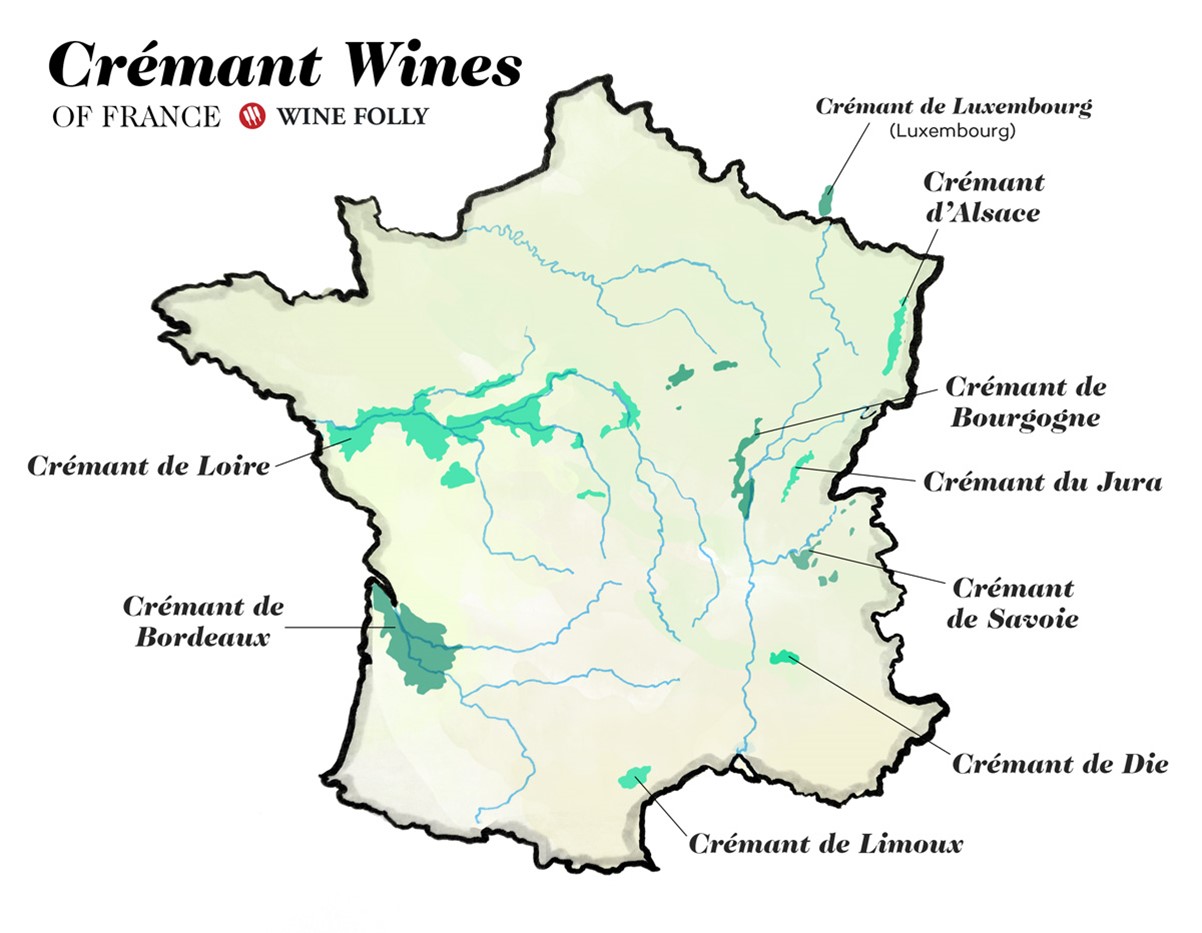
APRIL 2023 WINES
FEBRUARY 2023 WINES
-
FORGE CELLARS DRY
-
BODEGAS JUAN GIL
-
TENUTE BOSCO PIANO
-
TENUTI SAN LEONARDO TERRE DI SAN LEONARDO
-
PAUL O'BRIEN OREGON TERRITORY PINOT NOIR
-
TIKVES ALEXANDRIA CUVEE

Forge Cellars Dry Riesling Classique
2020 | $19.99
DESCRIPTION
Forge was founded by Rhône vigneron Louis Barruol and his longtime friend and fellow wine professional Richard Rainey. It’s still a relative newcomer, having debuted with the 2011 vintage. But in just over a decade the winery has established an outstanding track record with a dozen distinct Rieslings, most of which are single-vineyard bottlings. Forge’s annual production has grown from a debut of just 400 cases to over 13,000 cases today.
Our Classique bottlings are our most important wines, as they aim to reveal the true nature of each vintage and to explore the terroir of east Seneca Lake. These wines are the foundation of Forge, and each year we aim to craft a wine that consistently speaks of the style of Forge and a pure expression of the vintage. Each of the 16 vineyards that we work with contribute to the blend that make up our Classique wines. These wines showcase the beauty of Seneca Lake: to be able to consolidate the various elements of each site into a perfectly balanced wine. As a blueprint of our work from that particular vintage, this wine is our most important because not only does it always need to clearly translate the terroir, but it also needs to convey the kinetic spirit of Forge Cellars.
Forge Cellars Dry Riesling Classique 2020
The Classique is 100% Riesling that is picked from specific vineyard sites. The choices in the cellar guard the purity of the vineyards. Simply put, they make wine in the traditional, handcrafted manner. They harvest by hand. They sort by hand. They load the grapes into the press by hand. They shovel the vats out by hand. They employ spontaneous fermentation and ferment in very tiny lots, so that they truly understand the expression of the vineyard each year. They use very low levels of sulfur, and ferment their Rieslings bone dry, and do not fine or filter the red wines.
TASTING NOTES
NOSE:Aromas of nectarine, apricot, honey-crisp apple, and pear.
PALATE:
Crisp and vibrant with notes of mandarin orange, cardamom and citrus.
PAIRING:
Dry Rieslings pair well with raw, cured and smoked fish; shellfish, creamy sauces, pork, vegetables and goat cheese.
FUN FACTS: “The final tipping point for the region in achieving world-class wine region status was when a few outside winemakers put down roots in the Finger Lakes. Among them was Louis Barruol from the Rhône Valley’s Château de St.-Cosme, the flagship domaine in Gigondas. Along with his partners, Barruol helped to raise the benchmark for quality in the region with his Forge Cellars. The project debuted with the 2011 vintage, with a few hundred cases of outstanding dry Riesling. Since then, it’s grown to include 16 bottlings totaling 13,000 cases in 2019.”
— James Molesworth, Wine Spectator
10 years of 90+ Scores
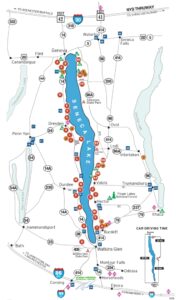



BODEGAS JUAN GIL
Red blend | 2019 | $19.99
DESCRIPTION
The origins of the Juan Gil winery date back to 1916, when Juan Gil Jiménez began producing wine in the center of Jumilla, Spain. Later, the third generation of the Juan Gil family decided to consolidate the business and began to craft wines under the brand name Juan Gil in homage to the founder of the company. Today, the fourth generation of the family runs the winery with renewed passion. Using the latest technologies available on the market, the winery works hard to bring to the public a wide array of wines mostly made from Monastrell. Though this great red grape is indigenous to the southeast of Spain, in the English-speaking world it is better known by its French name, Mourvèdre.
Bodegas Juan Gil Red Blend 2019
Juan Gil red blend is a mix of 45% cabernet sauvignon, 45% monastrell and 10% syrah. It is aged for 12 months in French and American oak barrels. It hails from Jumilla, Spain which is in the north.
TASTING NOTES
NOSE: The bouquet is a mix of bright summer berries and wild cherries.
PALATE: This red blend is smooth and plush on the palate with notes of black and red fruit wrapped in chocolate, clove, nutmeg and espresso.
PAIRING: This wine would pair perfectly with hearty and meaty dishes like hamburgers, pizza, short ribs, veal, pork, lamb, sausage or game.


TENUTE BOSCO PIANO DEI DIANI ETNA BIANCO
white blend | 2019 | $27.99
DESCRIPTION
The Etna DOC is among the oldest in Italy and Tenute Bosco is one of the most iconic wineries of this area. Tenute Bosco was born from Sofia Ponzini’s passion for her land with the goal of creating high quality wines inspired by the Etna tradition. Tenute Bosco is recognized as one of the most representative wineries and award-winning from Etna and has an artisan production of about 45,000 bottles per year. are located in Sicily, in southern Italy in Castiglione di Sicilia in the province of Catania, an area that is part of the circuit of the most beautiful villages in Italy. Here the famous Etna DOC wines are produced, true icons of Italian enology, which over the years have enjoyed growing success becoming one of the most appreciated denominations internationally.
Tenute Bosco Piano dei Daini Etna Bianco 2019
Piano dei Daini is a blend of indigenous organically farmed grapes. The blend is 90% carricante and the final 10% is catarratto, grecanico, minella, and inzolia grapes.
TASTING NOTES
NOSE: The aromas of the Piano Dei Daini Etna Bianco are a beautiful mix of flowers, botanical herbs and bright citrus notes.
PALATE:
The wine is lean, crisp and elegant. It displays notes of Meyer lemon, yellow apple and salinity. It is mineral-driven, dry, tangy, and pleasantly persistent.
PAIRING:This wine pairs with fish, shellfish, poultry, vegetables and salads.
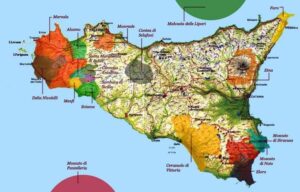

Tenuti San Leonardo Terre di San Leonardo
Red blend | 2016 | $18.99
DESCRIPTION
Tenuti San Leonardo’s history dates back 1500 years, with the return of prisoners from Trentino, who erected a chapel in honor of the patron saint of prisoners, Saint Leonard. Today, the ancient monastery hospice, which once gave shelter to the destitute, is now the cellar where the wines mature in barrels. Present owners the Guerrieri Gonzaga family have taken advantage of the terroir to create Bordeaux-inspired blended wines, under the guidance of master winemaker Carlo Ferrini and consultant winemaker Giacomo Tachis, considered to be a genuine maestro of Italian winemaking through his creation of some of Tuscany’s most influential wines since the 1970s. This talented pair ensures calculated aging 6 months in large format Slavonian oak, then 24 months in small French oak barrels and expert blending of each varietal, followed by a year of bottle aging. The results are consistently spectacular.
Tenuti San Leonardo Terre di San Leonardo 2016
San Leonardo is a blend of 50% cabernet sauvignon, 40% merlot and 10% carmenere. It is a product of spontaneous fermentation lasting between 15-18 days followed by maturation in concrete vats and French oak.
TASTING NOTES
NOSE: The aromas are delicate and soft with hints of wild rose, berries, cassis, and mulling spices.
PALATE: Terre offers bright intensity and lots of dark fruit with easy spice, fresh blackberry and subtle mineral tones.
PAIRING:
This wine pairs beautifully with beef, lamb, veal and grilled meats.
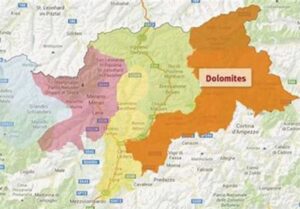

PAUL O’BRIEN OREGON TERRITORY
pinot noir | 2017 | $19.99
DESCRIPTION
Oregon Territory was created by two winemakers who share a passion for fine wine, great food and a gracious life. Dyson Paul DeMara and Scott O’Brien Kelley met while working at Robert Mondavi Winery in the Napa Valley nearly 20 years ago. Since then they have traveled the world’s wine regions learning the old world traditions and sharing new world techniques. In 2013 the duo came together to start Paul O'Brien Winery, the Umpqua Valley’s first urban winery in the historic Hansen Chevrolet building in downtown Roseburg, Oregon. The duo chose their middle names to brand the winery as it speaks to their friendship and partnership. Oregon Territory captures the rich spirit and powerful nature that makes Oregon so special.
Oregon Territory was created out of the desire to share the pioneering spirit of Oregon Pinot Noir. A variety the experts said could not possibly ripen in Oregon, yet 50 years later the world now understands Oregon’s importance.
While the Willamette Valley and Pinot Noir are like a fairy tale match made in heaven, most of Oregon is in fact, a glorious source of Pinot noir. Claiming over half of its total area under vine, pinot noir also thrives in Southern Oregon’s Umpqua and Rogue Valleys where sedimentary and volcanic soils dominate hillside vineyards and cool temperatures create the perfect environment for Pinot noir. Also, Oregon’s Columbia Gorge is becoming increasingly popular for Pinot noir production. What sets Oregon pinot noir apart from the pinot of other regions, both New and Old World, is its innate combination of grace with both power and restraint.
Paul O’Brien Oregon Territory Pinot Noir 2017
Oregon Territory is 100% Pinot Noir. It is hand-harvested and the grapes undergo vinification in open top concrete fermenters with 22% whole cluster. Then the wine ages 12 months in oak, with 25% in New French oak barrels.
TASTING NOTES
NOSE: Bright notes of cherry and red currant.
PALATE: Silky and elegant, fine tannins with mouthwatering acidity. Black cherry, crushed raspberries, and light notes of vanilla. Easy to drink and perfect by the glass.
PAIRING: Pair with mushroom risotto, bacon wrapped scallops over parsnip puree.
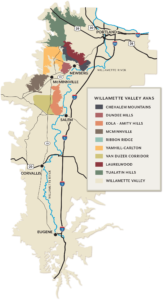

Tikves Alexandria Cuvee
Red blend | 2019 | $18.99
DESCRIPTION
Tikveš Winery was founded in 1885 in a region with centuries-old winemaking tradition, blessed with perfect natural conditions, warm and passionate people and a lively, authentic culture. We have always had a penchant to go beyond expectations, embrace innovation and conquer new markets. Over the years we acquired more prime land than any other winery in South Eastern Europe. We own the latest technology and employ some of the brightest and most experienced talent in the business, to ensure that the superior quality of our products is maintained at all times.
Our portfolio of fine wines stretches across several categories to fit every occasion, winning numerous highly-acclaimed international awards, year after year. Our mission is to create an opportunity for all wine lovers anywhere in the world, to be able to enrich any social occasion with the inimitable experience of Tikveš wines and share our passion for life.
Tikves Alexandria Cuvee 2019
The wine is a blend of 70% vranac, 20% merlot and 10% cabernet sauvignon. The average age of the vines is between 15-25 years. It is a dry red wine with intense ruby red color with a full-body and soft tannins.
TASTING NOTES
NOSE:It exhibits complex aromas of red and black fruits –cherries, plums, raspberries, and black currant, with notes of dried tobacco, smoke, black pepper and cinnamon.
PALATE: Alexandria Cuvee displays notes of blackcurrant, black plum, cedar and toast. It is round on the palate and has a long and spicy finish.
PAIRING: This blend will pair well with all Macedonian food, red meat, game, barbeque, and smoked meat.
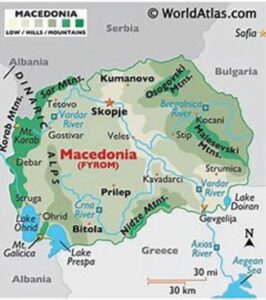
CONTACT HOLIDAY MARKET WINE DEPARTMENT



